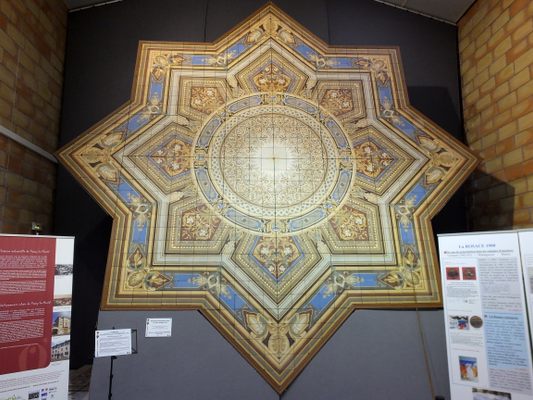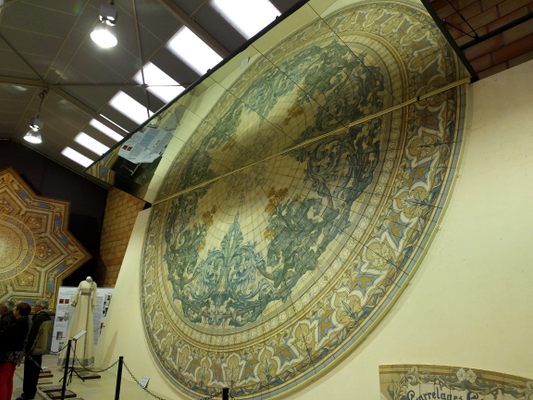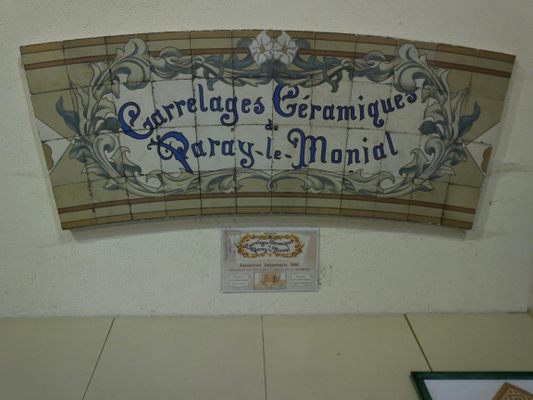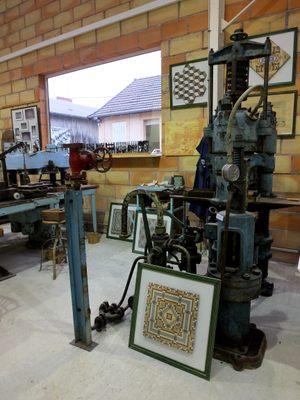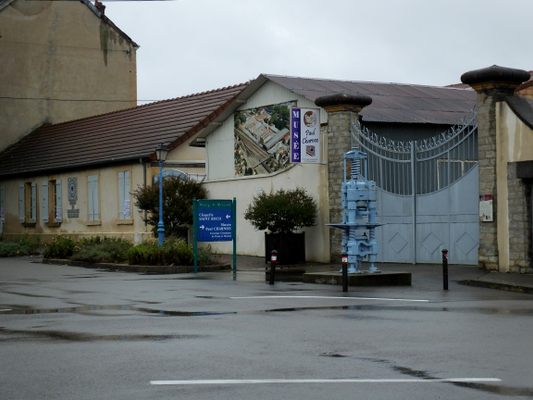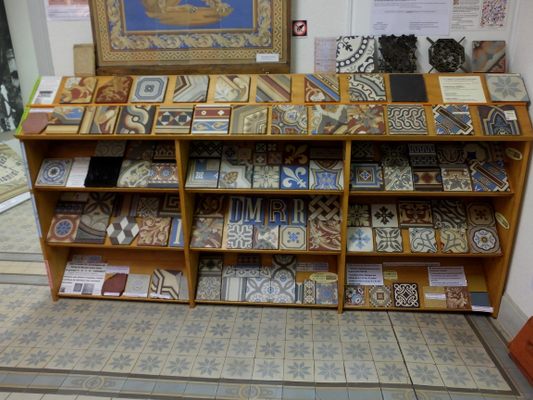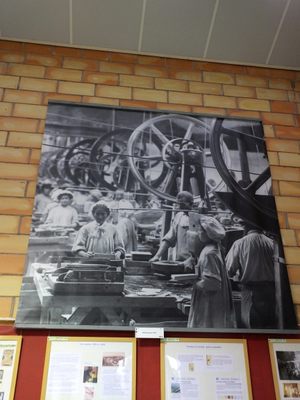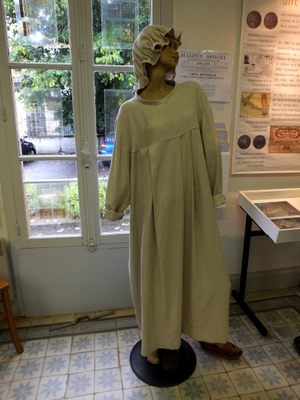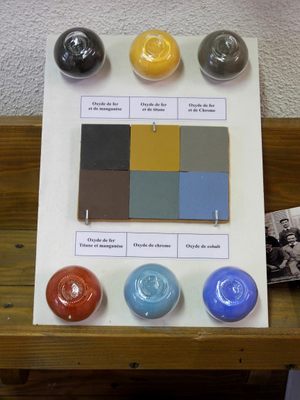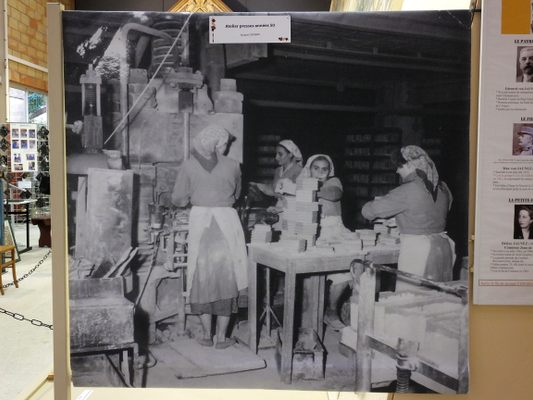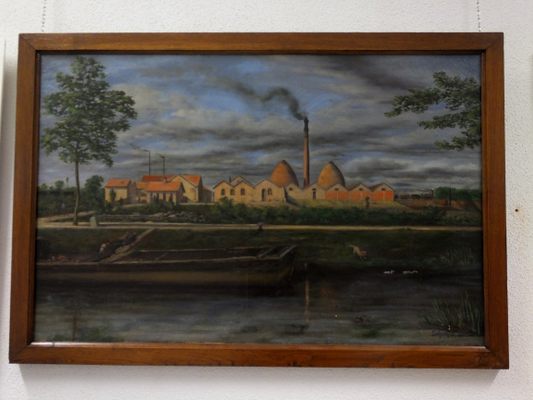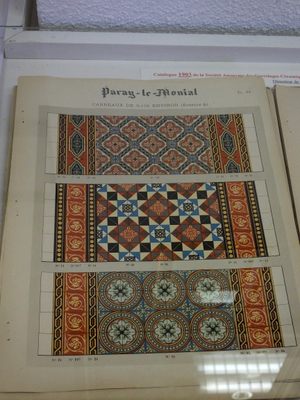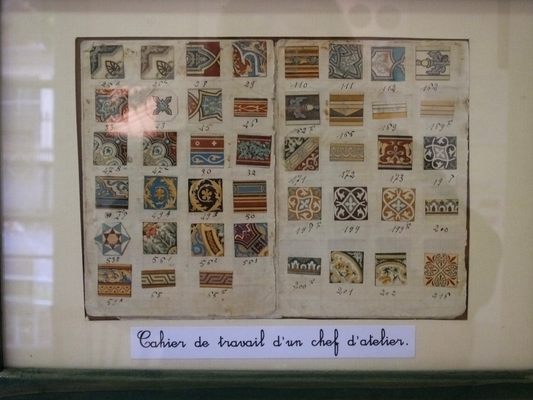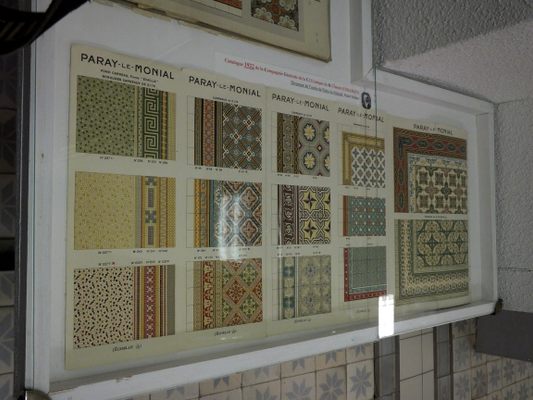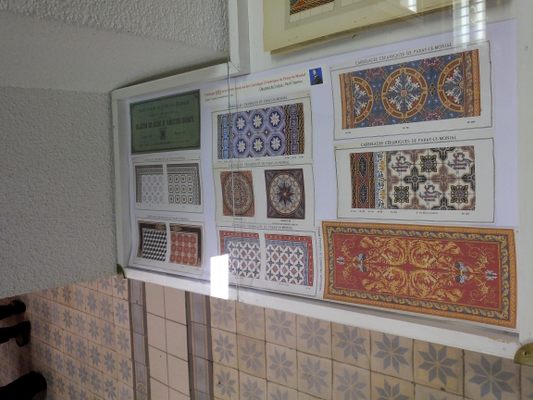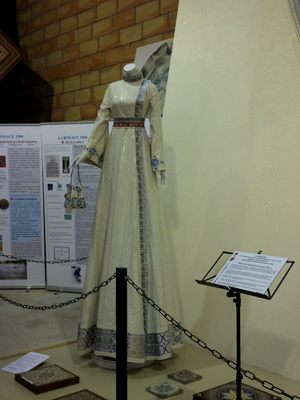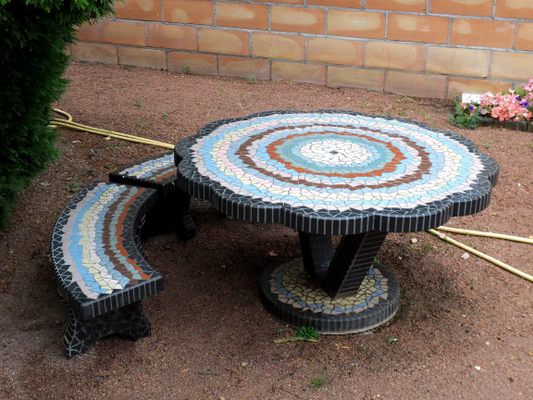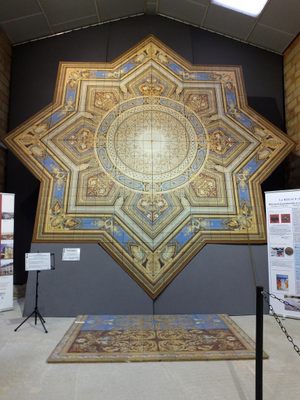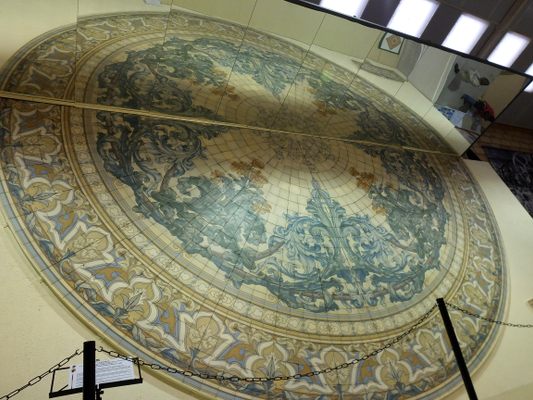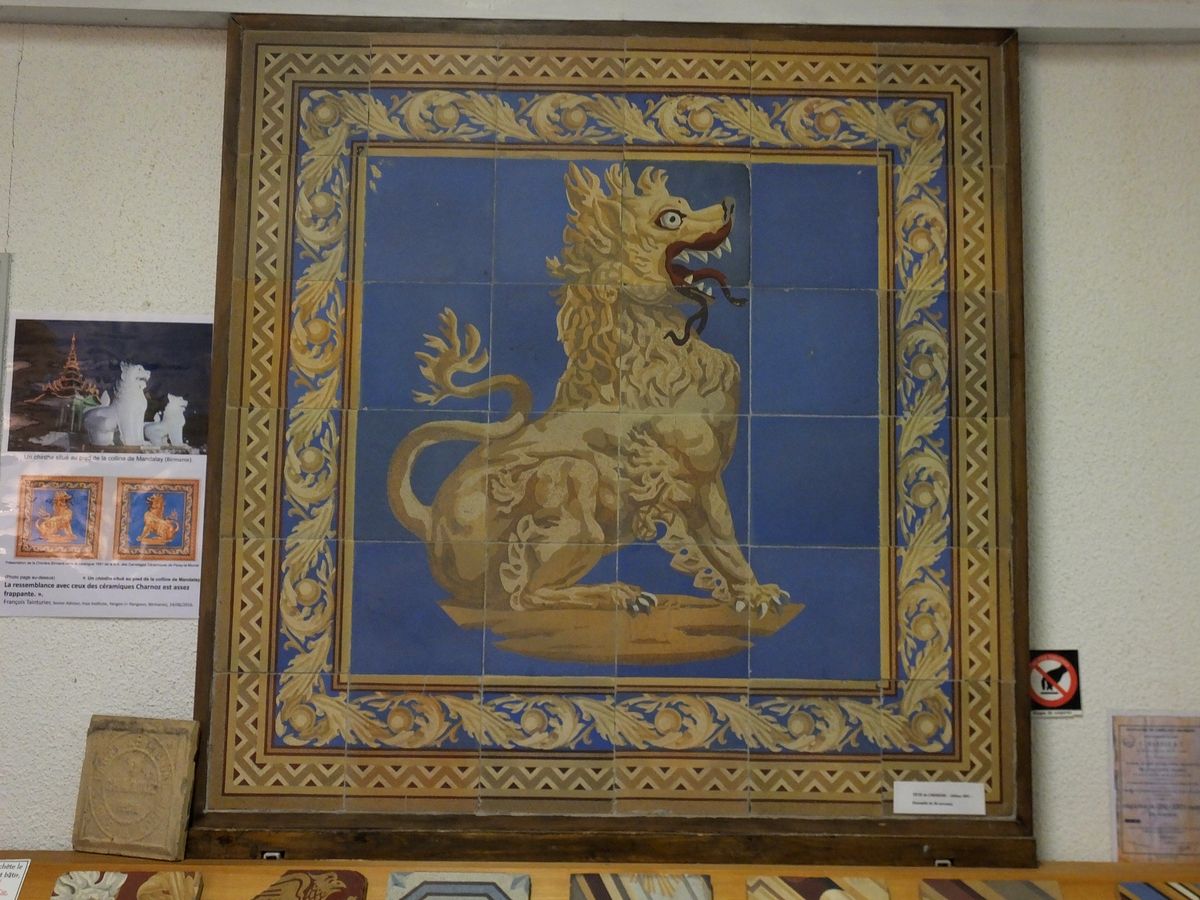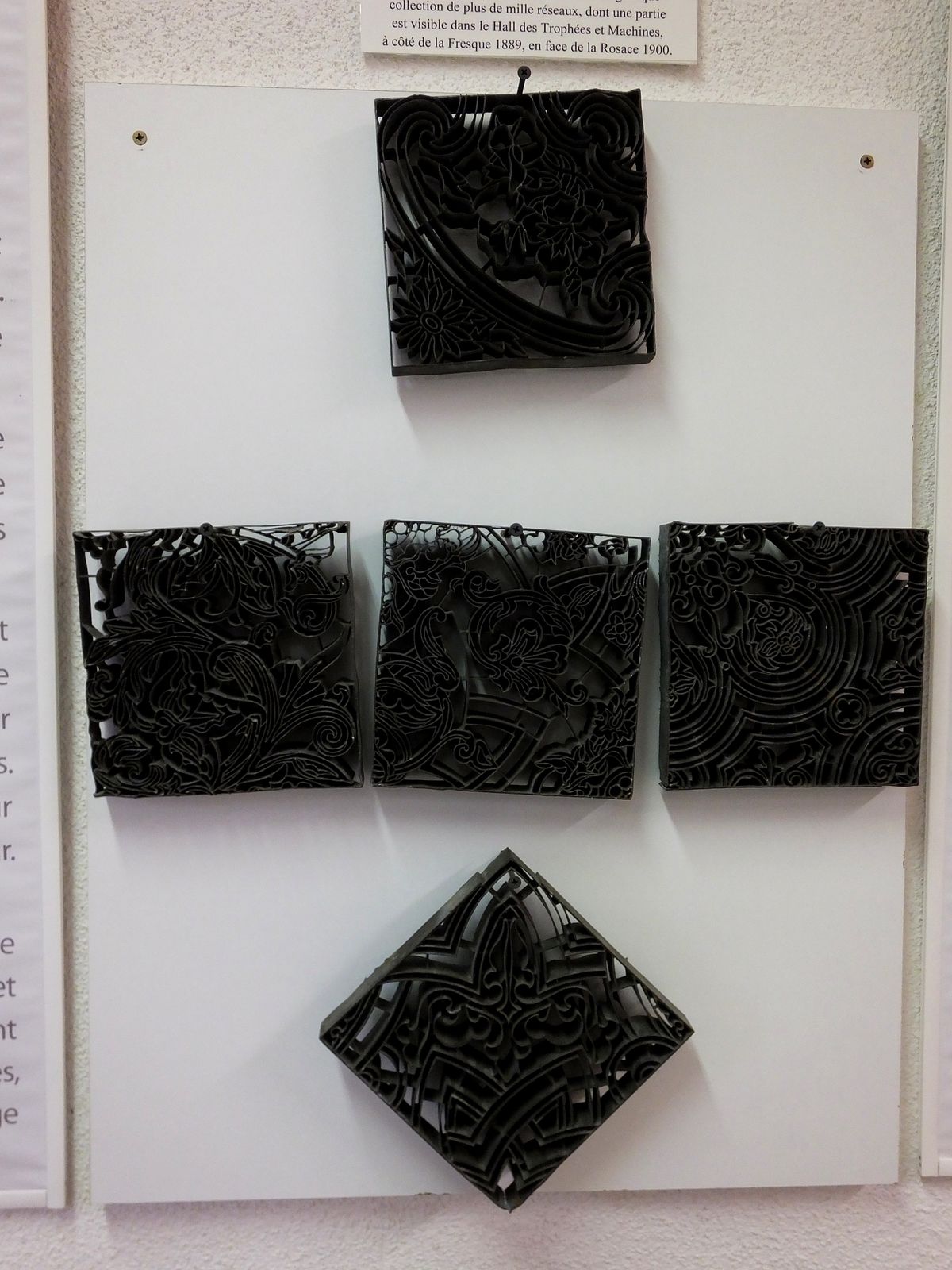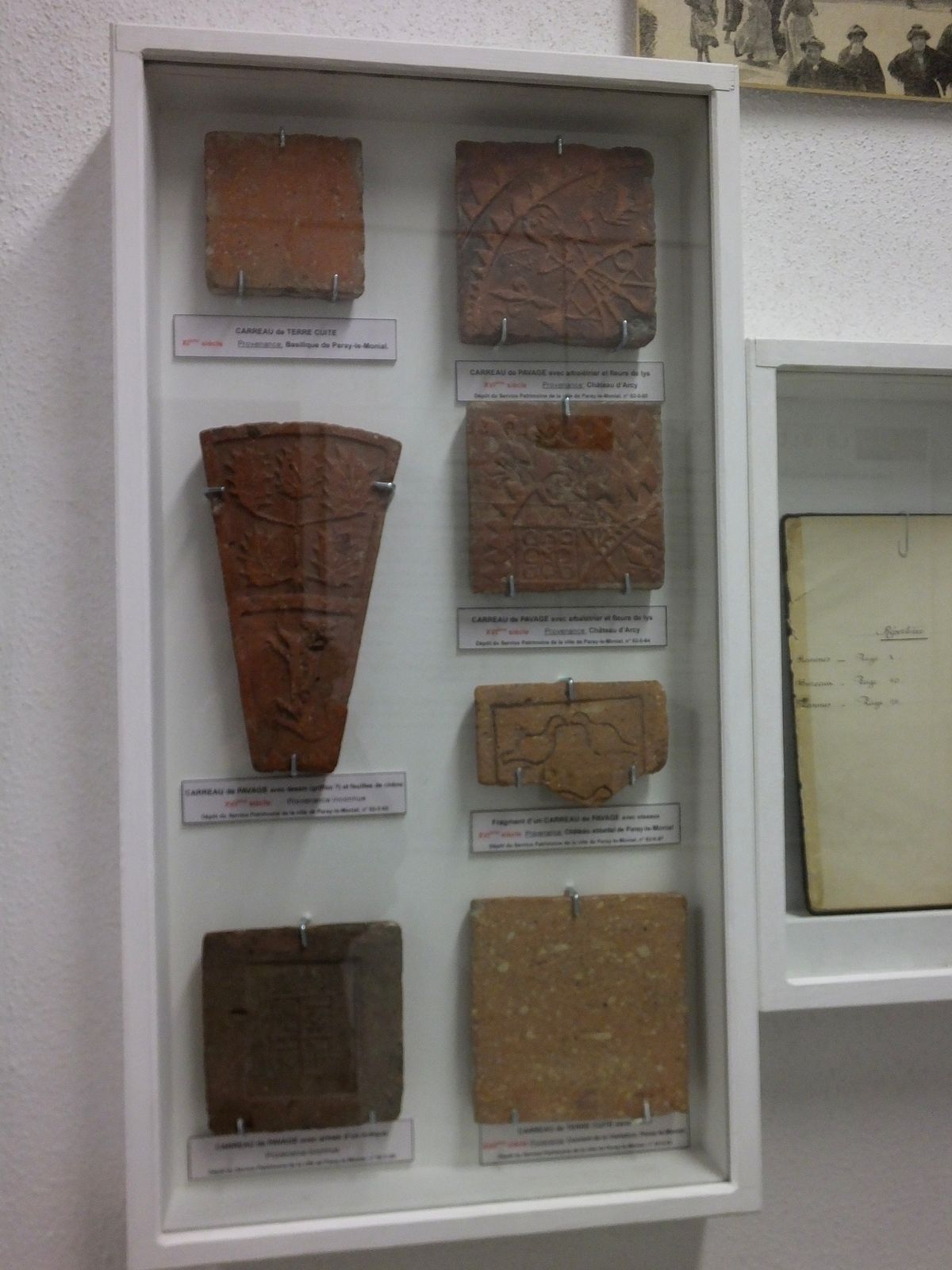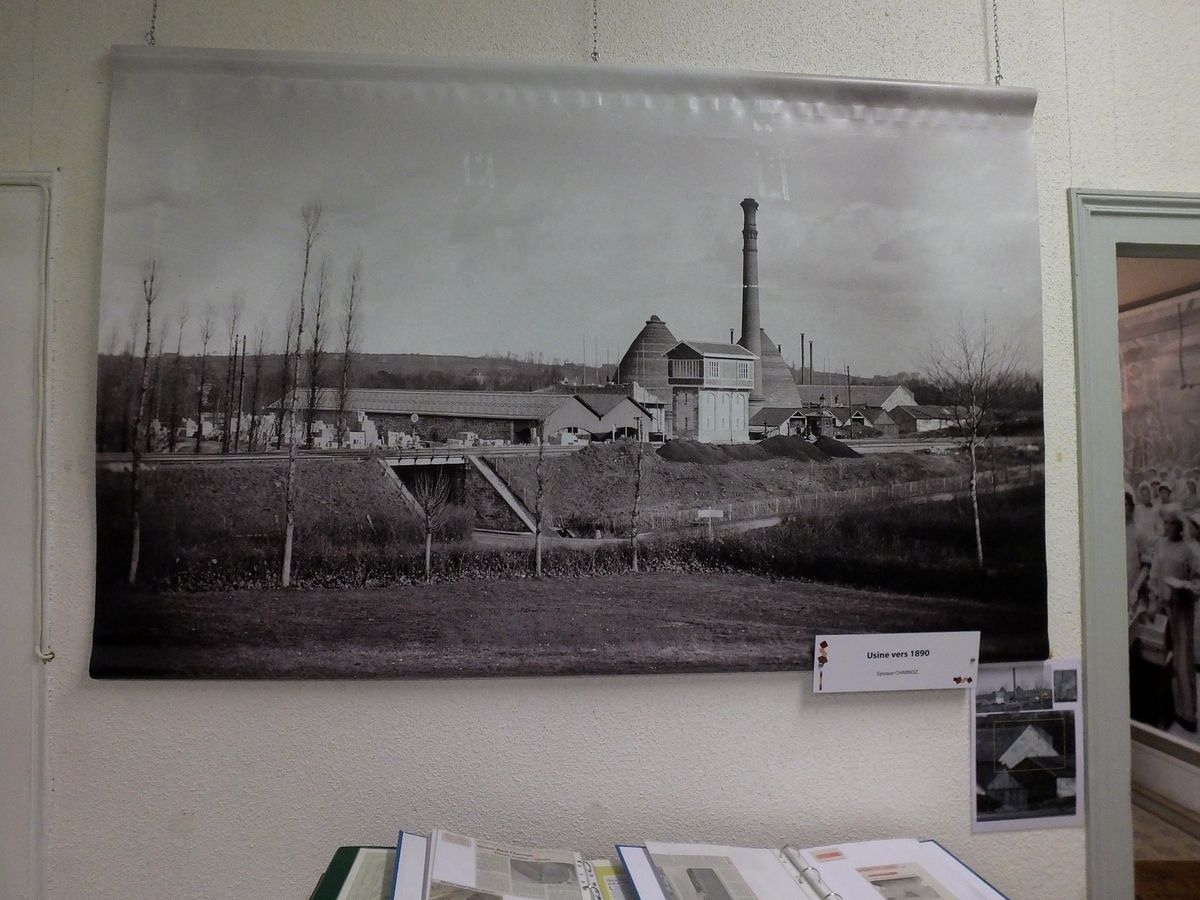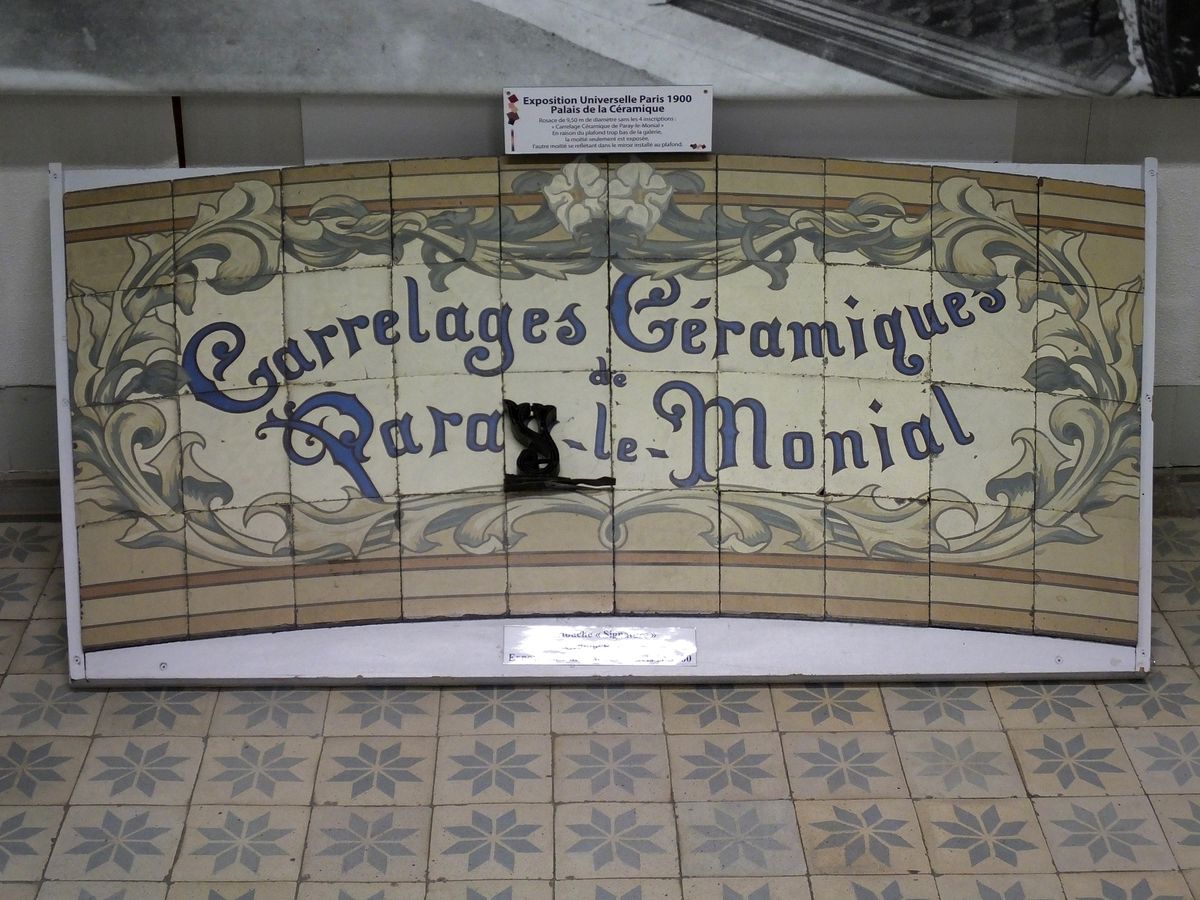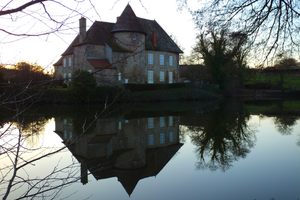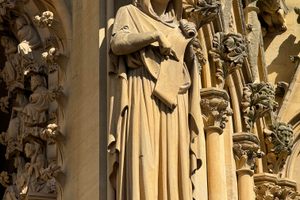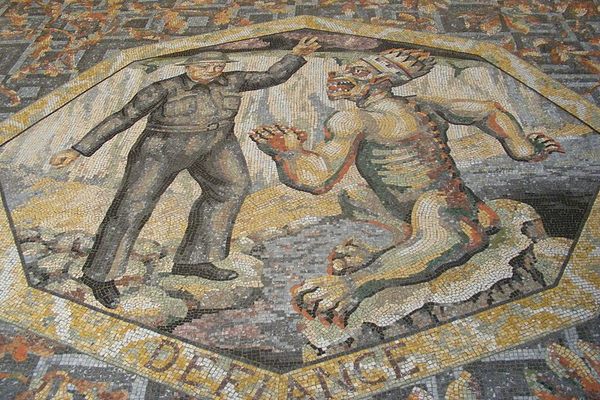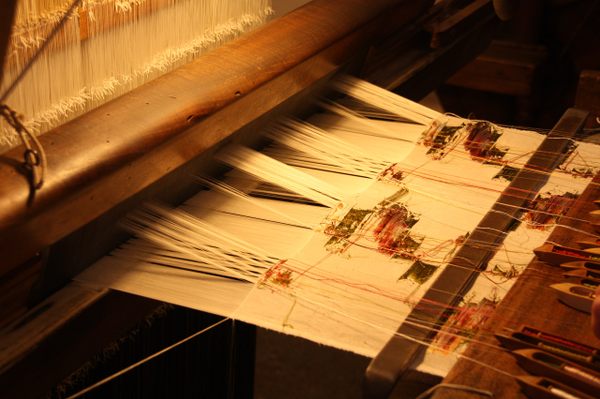About
In 1993, a pair of houses next to a former tile factory were converted into a museum celebrating the long tradition of tile-making in Paray-le-Monial. Among the exhibits at the Musée d'Art et d'Industrie Paul Charnoz (Museum of Art and Industry Paul Charnoz) are two great masterpieces, monumental frescoes made for the world fairs in Paris of 1889 and 1900, each awarded with the first prize.
Paul Charnoz was born in 1845 in the city of Metz. He learned about ceramics while working with his father Jules Charnoz, who was a director at the Boch Brothers ceramic factory in Dresden. In 1872, Charnoz married Marie Grudzinska Gralfigny, a Polish countess, in Dresden. The couple liked Paray-le-Monial as a place to raise their children, especially because of the local Jesuit school, and decided to settle there and open a business. Paray-le-Monial's ceramic factory opened in 1877 and soon became famous for its tiles.
The factory flourished, and by 1886 had around 50 employees. For the World's Fair of 1889 in Paris, they created a grand masterpiece: a monumental star-shaped fresco made of 700 different tiles and measuring 40 square meters (430 square feet). The piece won the gold medal, and demand for the handmade tiles of Paray-le-Monal skyrocketed. Castles, grand hotels, casinos, spas, and public buildings around the world were requesting tilework from the factory.
A second masterpiece was created for the World's Fair in 1900, this time a rosette that measured 120 square meters (1,291 square feet) made from 4,256 different handcrafted tiles. Once again, the piece took home a gold medal. (The rosette later became the dance floor of a villa in Marseille.) Demand for the tiles from Paray-le-Monial was enormous, but the demand for the luxury goods plummeted when World War I began. The factory had was put to work for National Defense, producing antacids blocks for gunpowder. During the German occupation of France in World War II, the plant had to produce soap.
After the war, the demand for tiles boomed, due to the vast number of repairs and new construction. The factory expanded and modernized slowly. In 1950, some 900 people worked for the factory, but more and more modern factories with cheaper production methods opened in the 70s and 80s, and the demand for the tiles of Paray-le Monial decreased. Eventually, the market demand and competition from low-cost foreign countries led to the plant closing its doors at the end of 2005.
Though the factory has closed, the museum lives on to share the history of the firm and its workers. Exhibits demonstrate how they created handmade tiles and used them to form intricate patterns. Both masterpieces created for the World's Fairs are on exhibition. The association was able to save the rosette floor in 1997, when they heard that the villa in Marseille was going to be demolished. Another great exhibit is a dress created for Madame Charnoz to wear at the 1900 World's Fair. The pattern of the dress resembles the patterns of tiles for the rosette fresco made by her husband's firm.
On exhibition are also old catalogs, several different examples for the ancient tiles, working machines, molds for the inlays, and other tools. Another part of the exhibition shows the area of the industrial tiles and examples for this part of the history of the fabrication of tiles in Paray-le-Monial.
Related Tags
Know Before You Go
The museum is open every day in July and August from 2.30 p.m. - 6.30 p.m.
Entrance is free. If you call in advance they will make sure somebody who speaks English is there.
If you want to visit other times than July and August you can make an appointment.
Community Contributors
Added By
Published
January 21, 2022
